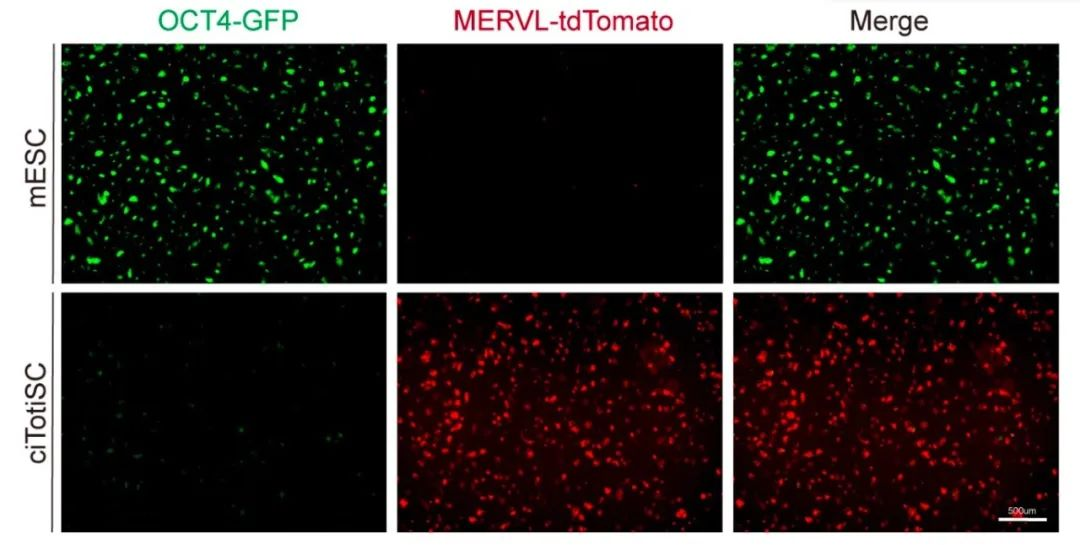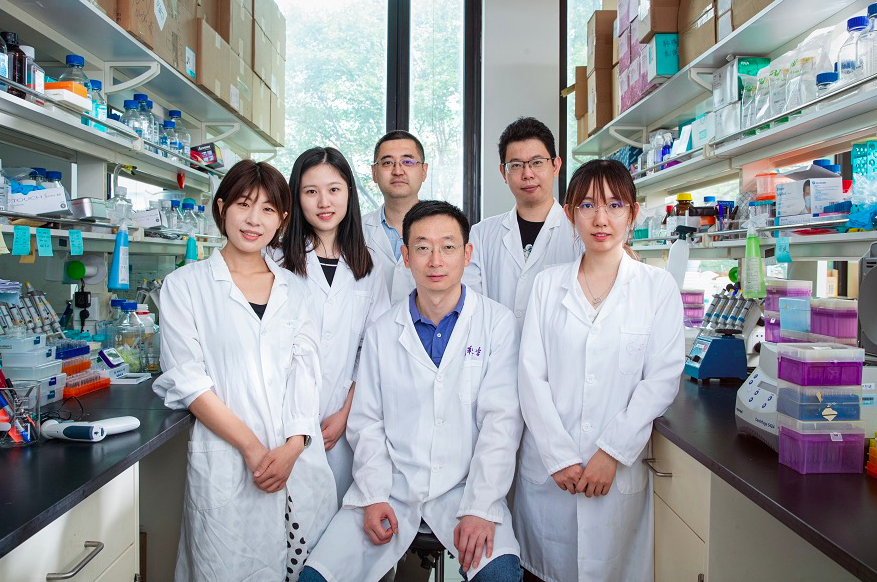Professor Ding Sheng and his team from the School of Pharmaceutical Sciences have discovered for the first time a drug combination for in vitro directed induction and stable culturing of totipotent stem cells. The breakthrough research findings were published online by Nature on June 21, 2022 (Beijing Time). The research marks the opening of a whole new field of life creation research.
1. Revolutionary ideas of life creation
From cloning technology to regenerative medicine, how to find other ways besides natural embryo breeding to create or restore life has always been a goal pursued in the field of life science. It has attracted generations of scientists to devote themselves thereinto, and relevant major achievements have been favored by the Nobel Prize multiple times. This ultimate question of life has also driven Professor Ding Sheng to explore the answer and produce the latest groundbreaking research findings.
2. Discovery of a new beginning for life
The research has discovered a new drug combination that can specifically induce a class of totipotent stem cells with the potential of turning into a whole organism. This innovative alternative route to getting the earliest cells of life from more mature cells, rather than using germ cells (sperm and egg), has broad implications. This discovery of creating the beginning of life in unnatural ways is a “holy grail” in biology.
In the meantime, researchers can maintain the totipotency (intra- and extra-embryonic differentiation potential) of the induced cells in the laboratory, providing a stable system for subsequent research to uncover the mysteries of life creation. This system is very important because it will make possible lots of scientific research on the origin of life. For example, scientists can use this system to deeply understand and manipulate totipotent stem cells for better knowledge about the highly coordinated process at the beginning of life. “Certain cells have to be present at a certain time and place for life to form,” says Ding Sheng, “Without right tools, you cannot delve into this question. In such sense, this discovery is an important step in search for the origin of life, and lays a solid foundation and opens up huge opportunities for subsequent research in this area.”
The beginning of life is a cell. Whether blood, brain, or liver cell, it can be traced back to the single-celled embryo or fertilized egg. In nature, sperm and egg combine to produce a fertilized egg, which divides to form new cells, and these new cells continue to divide and become specialized, producing the specificity and function of tissues and organs, a process that cannot be reversed. Once a single-celled embryo divides and reaches the two-celled embryo stage, the cell will quickly lose its ability to produce living individuals and to differentiate into all intra- and extra-embryonic cell types.
“Normally, no stem cell other than a totipotent one has the potential to form life on its own. To better study and control totipotent stem cells, we have developed a system that can induce and maintain these cells, and adopt strict criteria to confirm their identity,” Ding Sheng explained.
3. Induction mechanism of TAW cocktail drug combination
With 20 years of the understanding of the cell fate and the research on regulating stem cells by compounds, Ding Sheng led his team to select and screen thousands of small molecule combinations. Through multiple rounds of analysis, they discovered and finally identified a combination of three small molecules that can induce mouse pluripotent stem cells into becoming cells with omnipotent properties. The team calls this molecular combination as “TAW cocktail drug combination”. “Each letter in TAW represents a molecule known to regulate the fate of specific cells, but it is not until this research that their combined action of inducing totipotent stem cells is found,” Ding Sheng said.
The team confirmed in detail the Taw-induced cells, including their totipotency and non-pluripotency. These cells passed rigorous molecular testing standards at all transcriptome, epigenome, and metabolome levels. For example, the team found that hundreds of key genes were turned on in TAW cells. These genes are commonly found in totipotent stem cells and are held up by other researchers in the field as the standard for determining totipotency. Meanwhile, genes associated with pluripotent stem cells are silenced in TAW cells.
To further demonstrate that TAW cells are truly totipotent, the team tested their differentiation potential in vitro and injected them into early mouse embryos to see their differentiation potential in vivo. They found that these cells displayed the characteristics of true totipotent stem cells in the dish, and also differentiated into both intra- and extra-embryonic lineages in vivo. They have the potential to develop into the fetus and the surrounding yolk sac and placenta, which is typical of ordinary totipotent stem cells, whereas pluripotent cells can only develop into the fetus.
In addition, when the researchers cultured totipotent stem cells induced by the TAW cocktail drug combination under special culturing conditions, the new cells also showed similar totipotent properties. This observation suggests that TAW-induced cells can maintain totipotency in a laboratory setting, thereby establishing a stable system.

Chemo-directed induction from mESC to ciTotiSC (OCT4 green fluorescent labeled pluripotent stem cells, while MERVL red fluorescent labeled totipotent stem cells)
4. The research of totipotent stem cells has far-reaching significance and faces infinite challenges
Deeply understanding and mastering totipotent stem cells has far-reaching significance; for example, it opens up the possibility of recreating individual life and even speeding up the evolution of different species. Ding Sheng said, “As scientists, we focus on advancing scientific discovery and providing future researchers with the knowledge and tools to make decisions at the level of scientific research and social ethics. Breaking the limits of science may promote the reform of public policies, and reasonably adjust the balance between scientific research and social ethics, so that science can have more space for exploration, and widen the boundaries of human development.”
Acknowledgements
Professor Ding Sheng, Assistant Researcher Liu Kang and Associate Researcher Ma Tianhua from the School of Pharmaceutical Sciences are the co-corresponding authors of the paper. Hu Yanyan, Yang Yuanyuan and Tan Pengcheng from Ding Sheng’s research team are the co-first authors of the paper. Zhang Yuxia, Han Mengxia, Wang Dan, Li Yinqing, Yu Jiawei, Jia Zeran, Zhang Xin, Hu Zeping, Yao Ke and Pang Huanhuan from the School of Pharmaceutical Sciences offered great help in different experiments. This research gained technical support from the Laboratory Animal Resources Center, Pharmaceutical Technology Platform, and Cell Imaging Center of Tsinghua University, and was also supported by the “Stem Cell and Translational Research” key project of the Ministry of Science and Technology, the key projects and general projects of the National Natural Science Foundation of China, the Tsinghua University-Peking University Joint Center for Life Sciences, the Independent Research Program of Tsinghua University and other programs.

Group photo of key persons involved in the research results of Ding Sheng’s team






